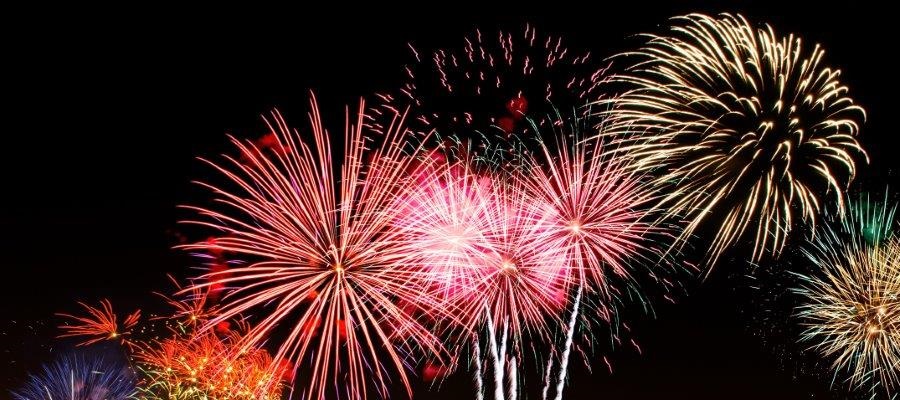In Slovakia and in many other countries, there is a saying about New Year’s Eve. It is a little different in every country, but it’s something like “Whatever you are doing at midnight on New Year’s, this is how your next year will be.” I’m glad we do not have this saying in the US, because if we did, I would spend almost every year alone!
For the last several years I like to just be at home by myself on New Year’s Eve, and maybe watch the countdown on television. They have a big celebration in Times Square in New York, with many bands playing, and this is also on TV. I don’t like parties anymore since I have gotten older. But I spent many crazy New Year’s Eves in Bratislava when I was younger….
In the US we only countdown to midnight, and then drink a glass of champagne with everyone near us (I don’t drink anymore, so that is different for me). In Slovakia it is also your day of independence, so there are fireworks, too. But in most places of the world there seems to be a similar celebration, maybe the most similar of any holiday. We know Christmas and Easter are different in almost every country. But New Year’s…. We are all welcoming in the New Year, right?
But do you know about Chinese New Year? It is celebrated between January 21st and February 20th, and it lasts the first two weeks of the Chinese year. It is celebrated not only in China, but countries near its borders with large Chinese populations like Thailand, Singapore, Indonesia, and the Philippines as well as in Chinese communities in the West. During this time, Chinese families gather together from all parts of the country and have a “reunion dinner.” It is tradition for the entire family to clean the house at this time. This is a symbol to “sweep away1” bad luck that might come to them. All the windows of the house are decorated with red paper designs like flowers or red paper with phrases or popular sentences on them like “good fortune” or “wealth”. Yes, in China they do light firecrackers2, but they also give money to friends or family in red envelopes. Red is the symbol of good luck and also happiness, that’s why it is a forbidden colour at a funeral. In 2021, Chinese New Year is February 12th, and it is the Year of the Ox.
When I lived in Scotland, they celebrated New Year’s like most other places. But in Scotland it was called “Hogmanay,” which is quite a funny word!
I was in Argentina a few years ago and celebrated New Year’s there. They do everything on the holiday quite normally, like most other countries. But… they also burn these large dolls, which are like mannequins. But remember, January is summer in Argentina, so it is very hot. Many families are at the tourist centres on the Atlantic coast swimming and playing on the beach.
A lot of Americans want to go to Hawaii for New Year’s. Why? Because it is one of the biggest places that celebrates the New Year near the end of the old year! It is twelve hours behind Slovakia. So when it is midnight in your country and everyone is singing and partying, it is only noon in Hawaii!
In upper Canada, Alaska, Sweden, and other northern places, it is dark all winter. And it is still dark when New Year’s comes. The people living in those places must check their watches and clocks to know how close it is to midnight because it is so dark all the time. I thought I would search in Google to see if I could find something about the astronauts, and if they could see the New Year’s fireworks from space, since there are explosions of fireworks all over the earth. Apparently, astronauts cannot see the fireworks displays. But one astronaut in the International Space Station did say that they would go around the earth sixteen times in the 24 hours before midnight.
ACTIVITIES:
– Who celebrates Chinese New Year?
– What does the colour red symbolize in China?
– What do the Scottish call their New Year’s?
– How is New Year’s Eve celebrated in Argentina? What do they burn?
– How many times does the International Space Station go around the earth in 24 hours?
Christian Weber
Vocabulary
1 zamiesť, odstrániť– zamést, odstranit; 2 delobuchy, petardy – dělobuchy

